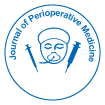
Journal of Perioperative Medicine
Open Access
ISSN: 2684-1290

ISSN: 2684-1290
Opinion Article - (2025)Volume 8, Issue 1
The choice of sedative agents plays a pivotal role in anaesthesia practice, influencing not only intraoperative hemodynamic stability but also the quality and speed of postoperative recovery. Among the commonly used intravenous sedatives, dexmedetomidine and protocol are frequently compared for their differing pharmacological profiles, especially regarding cardiovascular effects and recovery characteristics. Both agents offer distinct advantages and limitations and understanding these nuances is important for tailoring anaesthetic care to individual patient needs. Dexmedetomidine is a highly selective alpha-2 adrenergic receptor agonist that produces sedation, anxiolytics and analgesia without significant respiratory depression. Its sedative effect closely mimics natural sleep patterns, allowing for cooperative sedation, which is particularly advantageous in monitored anaesthesia care and intensive care settings. Propanol, on the other hand, is a Gamma- Aminobutyric Acid (GABA) receptor agonist that induces rapidonset hypnosis and amnesia, widely used for induction and maintenance of anaesthesia due to its predictable pharmacokinetics.
One of the most significant differences between dexmedetomidine and protocol lies in their hemodynamic effects. Dexmedetomidine commonly produces dose-dependent bradycardia and hypotension by reducing sympathetic tone and increasing vagal activity. This effect can be beneficial in scenarios where attenuation of the stress response is desired, such as neurosurgical or cardiac cases. However, in patients with pre-existing bradycardia, conduction abnormalities, or hypovolemia, dexmedetomidine’s cardiovascular depressant effects may precipitate hemodynamic instability.
In contrast, protocol frequently causes hypotension primarily due to systemic vasodilation and myocardial depression but tends to produce less pronounced bradycardia. The rapid onset and offset of protocol make it a preferred agent in many surgical settings, but its cardiovascular depressant effects can be problematic, particularly in elderly or critically ill patients where blood pressure fluctuations must be tightly controlled. Notably, protocol’s effect on blood pressure is often more abrupt and profound than dexmedetomidine’s, necessitating vigilant monitoring.
Regarding recovery time, protocol’ rapid redistribution and metabolism typically result in swift emergence from anaesthesia. This attribute facilitates quicker turnover in ambulatory surgery and shorter stays in Post-Anaesthesia Care Units (PACU). Patients sedated with protocol often experience minimal residual sedation, enabling early mobilization and discharge. However, protocol is associated with a higher incidence of Post Operative Nausea and Vomiting (PONV), which can delay discharge and reduce patient comfort. Dexmedetomidine, while providing a more natural and comfortable sedation, tends to prolong recovery time slightly due to its longer elimination half-life and sedative depth. Patients may exhibit prolonged sedation or delayed responsiveness, especially when higher doses are used or in elderly populations. Despite this, dexmedetomidine’s analgesic and opioid-sparing properties can contribute to improved postoperative pain control and reduced opioid-related side effects, factors that may offset its modest impact on recovery duration.
The choice between dexmedetomidine and protocol should also consider the clinical context and patient factors. For example, in procedures requiring light to moderate sedation with preservation of respiratory drive, dexmedetomidine’s profile is advantageous. Its minimal respiratory depression is critical in patients with compromised pulmonary function. Conversely, protocol remains the agent of choice for rapid sequence induction and maintenance of deep sedation where rapid titration and predictable wake-up times are essential. An emerging trend is the combined use of dexmedetomidine and protocol to leverage the benefits of both agents while mitigating their drawbacks. This approach allows dose reduction of each drug, thereby minimizing hemodynamic side effects and improving recovery profiles. Clinical studies have shown that this combination can maintain stable hemodynamic and enhance patient comfort during sedation or anaesthesia.
It is also important to recognize that both agents require careful titration and monitoring. Dexmedetomidine’s sympatholytic effects and propensity for bradycardia warrant cautious use in patients with cardiac conduction abnormalities. Propanol’s cardiovascular depressant properties demand readiness to manage hypotension and pane. Individual variability in drug response necessitates anaesthesia providers to adapt dosing and surveillance protocols accordingly. Finally, considerations such as cost, availability and staff familiarity influence the choice between dexmedetomidine and protocol. Propanol’s longstanding use and lower cost often make it the default sedative, whereas dexmedetomidine’s higher price and newer introduction may limit its accessibility despite its favourable pharmacodynamics in select populations.
Dexmedetomidine and protocol represent two fundamentally different sedative agents with distinct impacts on hemodynamic and recovery time. Dexmedetomidine’s ability to provide sedation with minimal respiratory depression and attenuated stress response is balanced by risks of bradycardia and prolonged sedation. Propanol offers rapid onset and recovery with predictable hypnotic effects but is associated with hypotension and respiratory depression. The optimal agent choice should be individualized, considering patient comorbidities, procedural requirements and recovery goals. In many clinical scenarios, the judicious combination of both agents may offer the best balance of hemodynamic stability and efficient recovery. As anaesthetic practice advances, continued research and clinician experience will further refine the roles of dexmedetomidine and protocol, ensuring safer and more effective perioperative care.
Citation: Harrison MJ (2025). Dexmedetomidine vs. Propanol: Effects on Hemodynamic and Recovery Time. J Perioper Med. 8:268.
Received: 05-Feb-2025, Manuscript No. JPME-25-37978; Editor assigned: 07-Feb-2025, Pre QC No. JPME-25-37978 (PQ); Reviewed: 22-Feb-2025, QC No. JPME-25-37978; Revised: 02-Mar-2025, Manuscript No. JPME-25-37978 (R); Accepted: 09-Mar-2025 , DOI: 10.35248/2684-1290.25.8.268
Copyright: © 2025 Harrison MJ. This is an open-access article distributed under the terms of the Creative Commons Attribution License, which permits unrestricted use, distribution, and reproduction in any medium, provided the original author and source are credited.